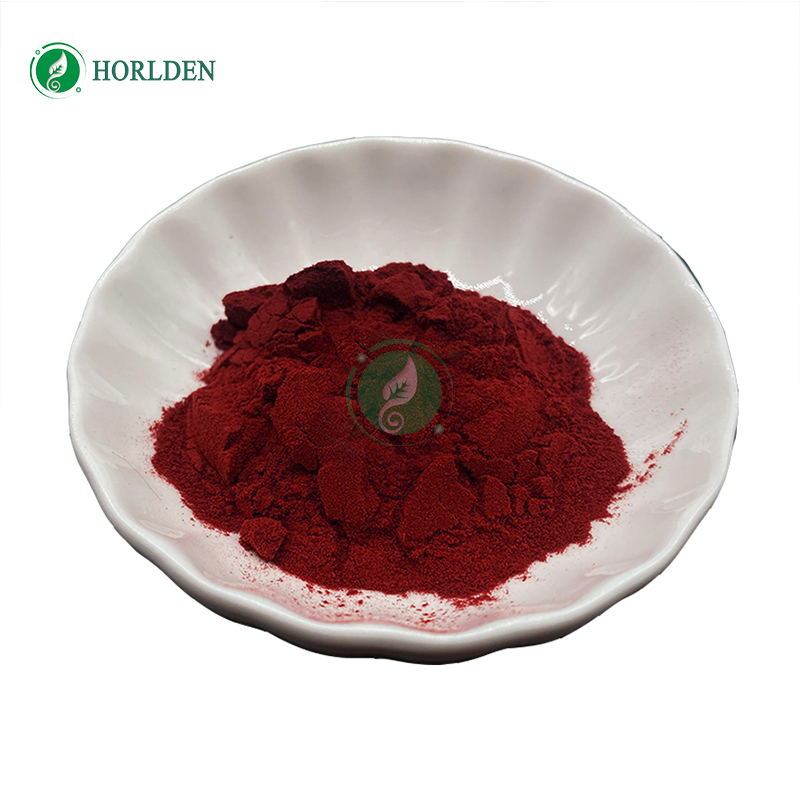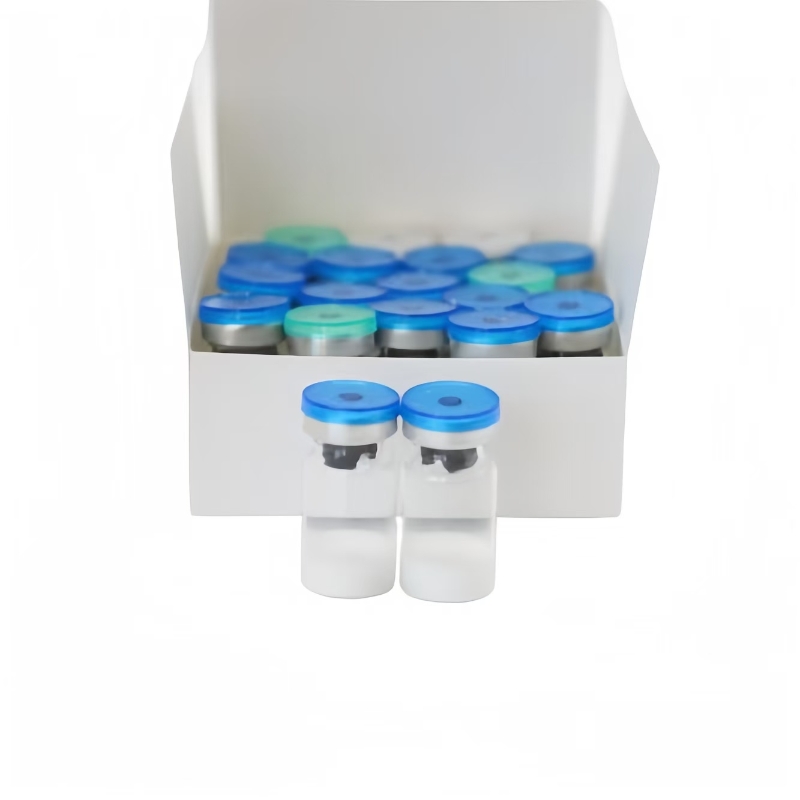Multinational pharmaceutical company PD-1 faces localization challenges in China
-
Last Update: 2018-05-24
-
Source: Internet
-
Author: User
Search more information of high quality chemicals, good prices and reliable suppliers, visit
www.echemi.com
There is a long way to go to fully understand the mechanism of PD-1 / PD-L1 pathway At present, how to make the best use of PD-L1 expression as a biomarker of immunotherapy prognosis has caused a lot of controversy, because in different tumors, clinical trials show different results The five most common cancers in China (liver cancer, lung cancer, breast cancer, colorectal cancer and gastric cancer) are all targets of immune checkpoint blocking However, five global listed PD-1 / PD-L1 inhibitors did not carry out any clinical research in China Until October 2014, MSD started a trial named keynote 042 in China for the first time to evaluate the efficacy of pembrolizumab in the first-line treatment of non-small cell lung cancer Multinational pharmaceutical companies mainly focus on expanding the international multi center clinical trials (MRCT) in the phase III clinical stage to the mainland of China As of April 9, 2018, 40 mrcts of PD-1 / PD-L1 inhibitors have included China in the trial, according to clinicaltrials.gov In addition, there are 16 special clinical trials in China Of the five approved PD-1 / PD-L1 inhibitors, only Pfizer / Merck syrano's avelumab has not publicly registered clinical trial information in mainland China, but GBI source data shows that three avelumab related clinical trials have been approved by CFDA According to the existing data, the most studied indication of multinational pharmaceutical companies in China is non-small cell lung cancer, with 19 items in total (see Table 1 and table 2) BMS has been committed to localized development of nivolumab in China and has launched 14 clinical trials in China In November 2017, BMS has submitted the listing application of nivolumab in China and has been included in the priority review process, which is also the first application for listing of PD-1 / PD-L1 antibody drugs submitted in China Karl lintel, head of BMS China, said at a press conference in March 2016 that innovative drugs like nivolumab will play a key role in the competition in the Chinese market Lintel pointed out that the R & D strategy of nivolumab in China may be different from the global model in terms of the selection of indications or the combination of drugs, which mainly depends on the specific clinical trial evidence BMS published the preliminary results of the checkmate-077 study at the 2017 CSCO held in September 2017 Checkmate-077 is a study to evaluate the use of nivolumab in patients with advanced or recurrent solid tumors in China The results showed that Chinese patients with solid tumors were well tolerated after treatment with nivolumab In addition, BMS is also trying to explore the effect of combination of nivolumab and other therapies Of the 14 clinical trials that have been recruited, 7 are the combination of nivolumab and CTLA-4 inhibitor ipilimumab or chemotherapy In contrast, mosadong mainly evaluated pembrolizumab as a single drug therapy, and pembrolizumab only had one study that was used in combination with other drugs, that is, with chemotherapy for the first-line treatment of NSCLC Factors of drug review and approval in China also made AstraZeneca and Roche's PD-L1 inhibitors, durvalumab and atezolizumab, catch up AstraZeneca is making full use of the advantages of its CTLA-4 inhibitor tremelimumab Among the 9 publicly registered clinical trials in durvalumab, 7 of them have tremelimumab's participation At the same time, Roche is also actively exploring the combined therapy effect of atezolizumab In addition to the combination with enzalutamide, a castration resistant prostate cancer treatment drug, 5 of the 16 trials are to study the combined treatment effect of atezolizumab and chemotherapy The commitment of multinational pharmaceutical companies to the localization of clinical research is reflected in the design of MRCT experiment It is not feasible to use the same trial plan for patients in different regions Chinese medical experts have said that the particularity of Chinese patients may make them face the risk of being excluded in the recruitment of mrcts for immunosuppressive checkpoint inhibitors, such as the high incidence of hepatitis, or the simultaneous use of traditional Chinese medicine and so on Professor Wu Yilong of Guangdong lung cancer research institute suggested that: we can carry out a wider range of investigation on Chinese patients to develop immunotherapy for Chinese patients, for example, we can take into account the gene spectrum of patients, the effect of chemotherapy, toxicity and other factors Especially for lung cancer, ethnic heterogeneity and therapeutic response in Chinese patients are well known The high mutation rate of epidermal growth factor receptor (EGFR) in NSCLC population in Asia (about 50% in China vs about 20% in the West) is the basis for the development of the first generation of targeted tyrosine kinase inhibitors (TKI), such as Irisa (gefitinib) Unfortunately, so far, immunotherapy has not been effective in EGFR positive cancer patients As can be seen from the limited public data, previous studies on PD-1 / PD-L1 in EGFR mutant NSCLC patients and anaplastic lymphoma kinase (ALK) - positive metastatic NSCLC patients have not achieved satisfactory results Therefore, most of the clinical trials of PD-1 / PD-L1 carried out by multinational pharmaceutical companies in China focus on EGFR / ALK wild-type diseases Of course, there are also some studies exploring the combination of immunotherapy and TKI therapy AstraZeneca is carrying out a study to evaluate the effect of durvalumab and its third generation EGFR TKI combined therapy, in which Chinese patients are also involved (from August 2014; nct02143466) Although the results of the trial have not yet been published, it is known from the limited data published in other relevant studies that the combination of immunocheckpoint inhibitors and EGFR-TKI will have toxic effects on patients, which also makes further clinical research on the combination therapy fall into controversy 3 EGFR and PD-L1 are closely related Scientists have never stopped studying the complex relationship between EGFR and PD-L1 expression in tumor microenvironment Recent research progress reveals another potential application of immunotherapy It has been found that EGFR can up regulate the expression level of PD-L1 in lung cancer, which opens up the research of scientists about PD-L1 expression may be a prognostic factor of targeted therapy, chemotherapy and immunotherapy A team from Fujian Medical University found that EGFR-TKI had a better therapeutic effect on patients with PD-L1 positive EGFR mutant lung cancer, and the level of PD-L1 expression was significantly higher in patients with resistance to gefitinib One hypothesis is that tumor resistance to EGFR-TKIs may depend on the immune escape mechanism of PD-1 / PD-L1 pathway, which indicates that immunotherapy is probably the best follow-up therapy for patients who have received EGFR targeted therapy BMS is evaluating the efficacy of nivolumab (combined with epimab or chemotherapy) in TKI treated EGFR positive NSCLC patients (limited to T790M negative patients) in an international phase III MRCT study checkmate 722 The study includes 14 pilot institutions in mainland China and four hospitals in Hong Kong; patient recruitment in Hong Kong is already underway and preliminary data are expected to be available in October 2019 There is a long way to go to fully understand the mechanism of PD-1 / PD-L1 pathway At present, how to make the best use of PD-L1 expression as a biomarker of immunotherapy prognosis has caused a lot of controversy, because in different tumors, clinical trials show different results Chinese researchers have also made significant contributions in this area, especially in the investigation of race specificity A recent study by researchers from Fudan University's Shanghai Cancer Research Center showed that compared with Western patients, the expression level of PD-L1 in East Asian lung cancer patients was very low, which may also be another factor limiting the treatment of Chinese patients with immunocheckpoint inhibitors At present, many drug developers are working to solve this problem According to reports, Jiangsu Hengrui pharmaceutical is carrying out a phase II clinical study to determine the best critical value of PD-L1 expression level that can be treated with immunocheckpoint inhibitors in Chinese NSCLC patients At the same time, Roche is using the second generation sequencing technology (NGS) to determine the expression of T cell antigen receptor (TCR) in NSCLC patients, because TCR may become a potential biomarker guiding the clinical application of atezolizumab The first generation of PD-1 / PD-L1 inhibitors that are currently under development in China is likely to be the last example that the time to market in China lags behind the rest of the world by 3-5 years However, for the government, it is still a sensitive issue that not enough patients can afford this expensive treatment Because PD-1 / PD-L1 therapy costs about $300000 a year in the United States, most people, except the rich, can't afford it even if it's launched In the past 18 months, although nivolumab and pembrolizumab have been approved for listing in South Korea, Taiwan, India, Australia, New Zealand and Singapore, no PD-1 / L1 drugs have been approved for listing in China However, in March 2017, CFDA approved Chengmei international medical center of Hainan cancer hospital in Boao Lecheng International Medical Tourism experimental area to import anticancer drugs, including keytruda, so that Chinese patients can use foreign advanced therapies in advance before these imported drugs go on the market Since June 2017, CFDA officially joined the International Conference for the coordination of human drug registration technology (ICH) and became the eighth member of its global regulatory body, CFDA has been striving to promote the early integration of China's drug registration technology standards with international standards Previously, the drugs for which overseas applicants applied to conduct international multi center clinical trials (MRCT) in China must have been registered overseas or have entered phase II or phase III clinical trials In October 2017, CFDA issued a new regulation that allows imported drugs (excluding biological products for prevention) to carry out phase I clinical trials in China and abroad simultaneously, cancels the previous "three reports and three batches" process for drugs carrying out MRCT and the requirement for some imported drugs to be listed overseas In addition, at the end of January 2018, CFDA also announced that five ICH level II guidelines will be gradually applied from February 1, 2018 The complexity of the application of PD-1 / PD-L1 antibody drugs in Chinese patients also shows the necessity of this reform With the reform going on, the historical problem of lack of phase I clinical trial institutions in China will be solved However, CFDA has also prepared to change the qualification of clinical trial institutions into record management, allowing clinical trial undertakers to freely choose sites and train local researchers At present, China's leading clinical trial institutions have world-class R & D capabilities, and widely participate in global phase III clinical trial research For example, the Chinese chest cancer research collaboration group (ctong), which is composed of 31 top hospitals, now has the ability to conduct basket trials for highly related gene variant diseases such as immunotherapy In the next 12 months, multinational pharmaceutical companies will continue to release clinical trial data With the development of this embryonic treatment method, immunotherapy market will become more and more important.
This article is an English version of an article which is originally in the Chinese language on echemi.com and is provided for information purposes only.
This website makes no representation or warranty of any kind, either expressed or implied, as to the accuracy, completeness ownership or reliability of
the article or any translations thereof. If you have any concerns or complaints relating to the article, please send an email, providing a detailed
description of the concern or complaint, to
service@echemi.com. A staff member will contact you within 5 working days. Once verified, infringing content
will be removed immediately.







